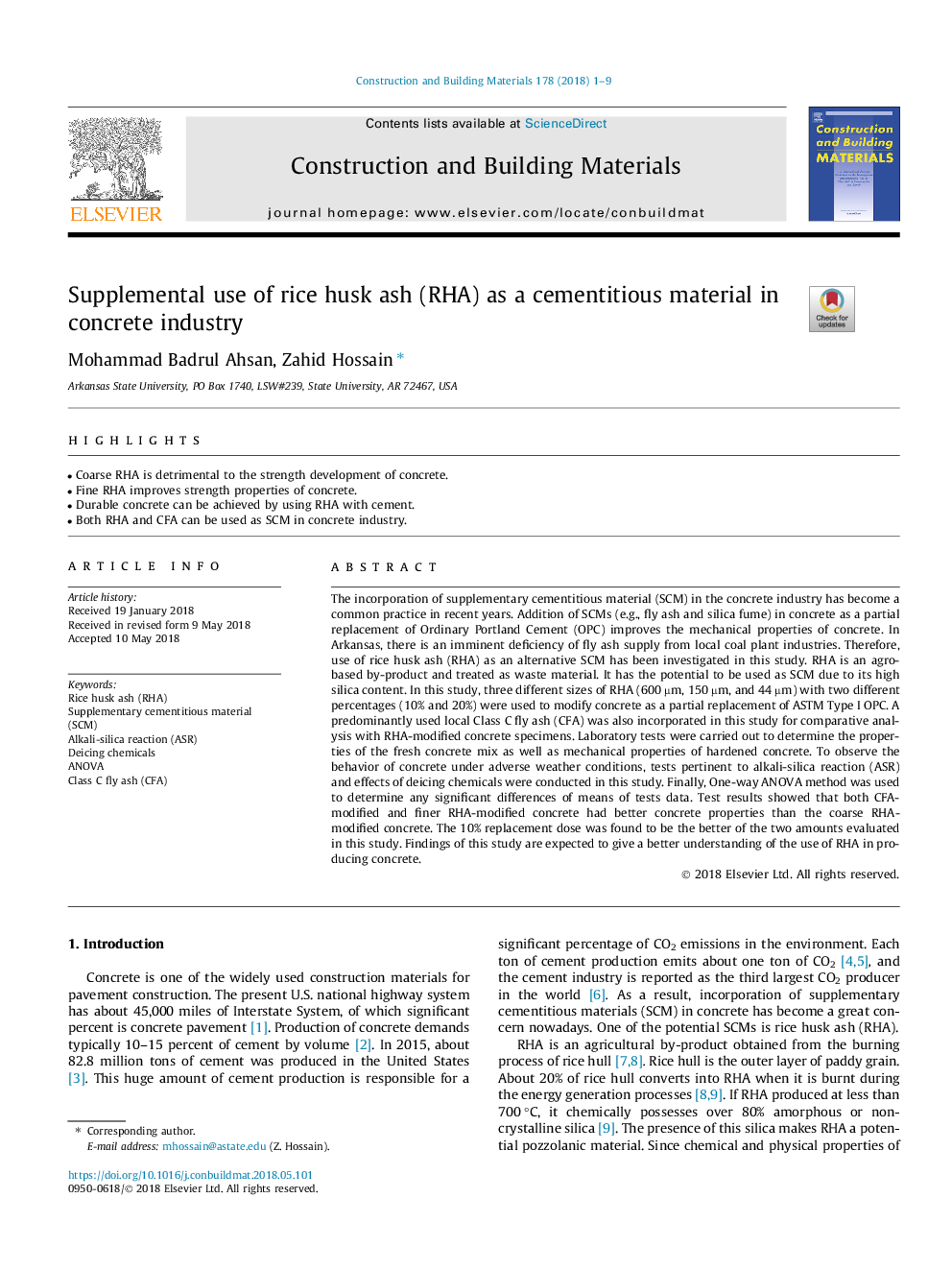| Article ID | Journal | Published Year | Pages | File Type |
|---|---|---|---|---|
| 6712748 | Construction and Building Materials | 2018 | 9 Pages |
Abstract
The incorporation of supplementary cementitious material (SCM) in the concrete industry has become a common practice in recent years. Addition of SCMs (e.g., fly ash and silica fume) in concrete as a partial replacement of Ordinary Portland Cement (OPC) improves the mechanical properties of concrete. In Arkansas, there is an imminent deficiency of fly ash supply from local coal plant industries. Therefore, use of rice husk ash (RHA) as an alternative SCM has been investigated in this study. RHA is an agro-based by-product and treated as waste material. It has the potential to be used as SCM due to its high silica content. In this study, three different sizes of RHA (600â¯Âµm, 150â¯Âµm, and 44â¯Âµm) with two different percentages (10% and 20%) were used to modify concrete as a partial replacement of ASTM Type I OPC. A predominantly used local Class C fly ash (CFA) was also incorporated in this study for comparative analysis with RHA-modified concrete specimens. Laboratory tests were carried out to determine the properties of the fresh concrete mix as well as mechanical properties of hardened concrete. To observe the behavior of concrete under adverse weather conditions, tests pertinent to alkali-silica reaction (ASR) and effects of deicing chemicals were conducted in this study. Finally, One-way ANOVA method was used to determine any significant differences of means of tests data. Test results showed that both CFA-modified and finer RHA-modified concrete had better concrete properties than the coarse RHA-modified concrete. The 10% replacement dose was found to be the better of the two amounts evaluated in this study. Findings of this study are expected to give a better understanding of the use of RHA in producing concrete.
Related Topics
Physical Sciences and Engineering
Engineering
Civil and Structural Engineering
Authors
Mohammad Badrul Ahsan, Zahid Hossain,
